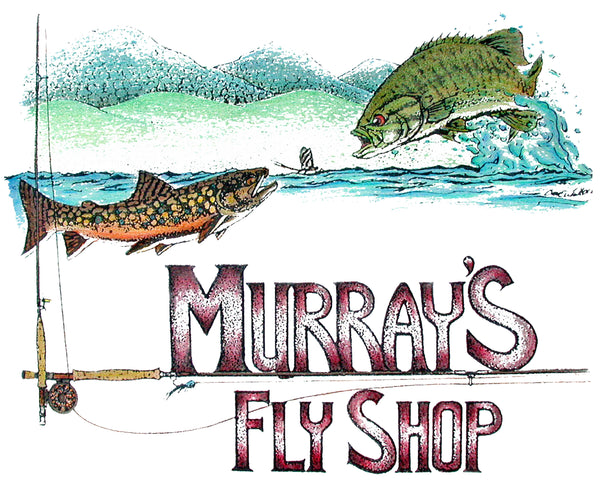My favorite Smallmouth Bass Fly Fishing Tackle
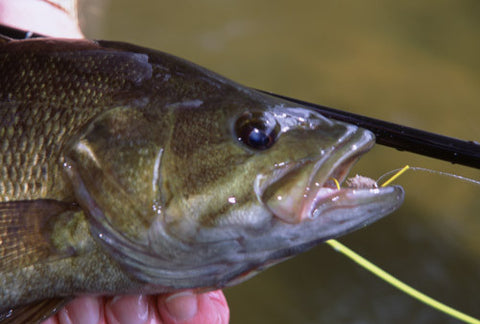
Selecting the proper tackle for your smallmouth bass fly fishing will enable you to get the most out of your pursuit of this fine fish. It will make your quest very pleasant, extremely rewarding and it will even help you catch more large bass.
When I wrote my first book on Fly Fishing for Smallmouth Bass (fourteen books ago) one of the magazine editors who reviewed it said “Murray is fly fishing for smallmouths with trout tactics.” Although we do not use trout tackle for smallmouths, the serious angler does select his smallmouth tackle with the same care he uses when selecting his finest trout tackle.
Let us first look at the basic smallmouth tackle in the same fashion I help the beginning anglers in my smallmouth bass fly fishing on the stream schools then we will go into some of the refinements in tackle that will help you catch more bass.
The fly rod I like for most of my smallmouth bass fly fishing is 9 feet long that balances with a seven weight line. It has a strong tip to help pick up the large heavy nymphs and streamers and a medium butt section to blend with the wind resistant nature of our bulky surface poppers and deer hair bugs. If I know I will be using many bulky bugs size four I use my eight weight bass rod which is built in the same manner as my seven weight rod… just stronger.
I keep my fly rod in its aluminum tube when I go to the river and do not take it out until I have my waders and vest on and I am ready to get into the stream. Then when I complete fishing I put the rod back into its aluminum tube as soon as I get back to my car. This simple care holds down accidental rod breakage around the car.
I like a light weight fly reel with a smooth drag that will hold the line and two-hundred feet of backing. The extra backing is needed for the carp I catch. I also carry two extra spools for other lines.
My basic line is a WF 7 Floating Scientific Anglers Mastery Bass Bug fly line. My second line is a Scientific Angler Master WF-7-F/S Sinking Tip III line in which the first twelve feet of the line sinks at 2.50 to 4.25 inches per second. I go to this sinking tip line if I need to get my nymphs and streamers deeper than I can with my floating line. My third line is a Teeny 200 line in which the first twenty four feet sinks at 5.5 inches per second. I use this line mostly in the spring when the streams are high and in the late fall when the bass go into deep water.
Leaders for smallmouth bass fishing are one of the most important items for successful fishing, yet as I have found in my “on the streams schools” and guide trips they are one of the most neglected and misunderstood items of our tackle.
I use our Murray’s Bright Butt Compound Knotted 9 foot 2X leaders with two Scientific Anglers Indicators installed on them with my floating lines. These have two fluorescent mono pieces in the butt covering five feet of the leader. These are followed by twelve inches of 0.015 clear mono, six inches of 0.013 clear mono, and six inches of 0.011 clear mono then complete with twenty four inches of 2X tippet. I place one Scientific Angler Indictor in each of the two butt sections. (If you would like other size leaders the formulas are covered in my book Fly Fishing Techniques for Smallmouth Bass).
This leader system achieves three important functions not possible with clear leaders. (1) When fishing nymphs upstream dead drift the bright butt of the leaders and the SA Indicators help to quickly discern the strike. (2) When fishing nymphs with the “swing nymphing method” in the six to eight foot deep cuts beside you the SA Indicators easily let you see if you are getting the depth you need. (3) When fishing streamers across streams this system will often show you that you have a strike before you can feel it.
I do not like regular floating indicators for smallmouth fishing because they play tug-of-war with my nymphs and streamers thus robbing me of the depth I need.
When using my sinking tip lines and Teeny Sinking Heads Lines I use a regular five foot knotless ten pound test leader.
Vest and chest pouches both have their place in smallmouth fishing.
I use my vest if I am wading and need to carry my raincoat, SLR camera, lunch and drinking water in addition to my regular tackle. If I am fishing from our Hyde Drift Board I can easily get by with my basic tackle in just a chest pouch because I put the other above items in my dry-bag in the boat.
I like a light weight breathable, waterproof raincoat that will fit in the back of my vest and I keep this with me at all times.
Chest high breathable waders are a must in the spring and fall when the rivers are cold. During the summer I leave the waders behind and use just nylon slacks with a pair of neoprene booties and wading shoes. Metal studs give extra traction while you are in the rivers but I took a very bad fall when climbing a solid dry ledge beside the river. Also some fellows do not like anyone to use metal studs in their boats.
I always use a FolStaff wading stick in all streams. These give extra stability when wading and they help me probe the water ahead of me and see if it is too deep to wade.
A cap or hat that is dark on the underneath side of the brim and a good pair of polarized glasses are a must. Only with these can you accurately read the feeding stations and cover in the river so you know where to present your flies.
A good, but small, flashlight is essential for changing flies and reworking your leader late in the evening and getting safely out of the river in the evening.
A good large landing net will help your quickly land your bass so you do not stress them. This will enable you to return them to the stream in good shape.
In going through my vest I find these items which I carry at all times: leader clippers on a retractor, hook sharpening file, forceps for mashing down hook barbs and releasing fish, stream thermometer, Sawyer Extractor snake bite kit, an extra Bright Butt Leader, leader building mono from 0.015 down to 2X, lead free split shot, extra sunglasses, silicone bug floatant for deer hair bugs and extra Scientific Anglers indicators. In a zip-lock bag in the back of my vest I carry such emergency items as a small Swiss Army knife, miniature Leatherman, wader patching materials, butane lighter, police whistle, over-sized rod tip top guide in case I break my rod, ferrule cement, rubber jar openers for stuck ferrules and safety pins.
Back in my car I always have a well stocked “fall-in bag” with extra warm dry clothes.
In many cases having the correct smallmouth bass tackle can help you have more rewarding trips and catch more large bass.
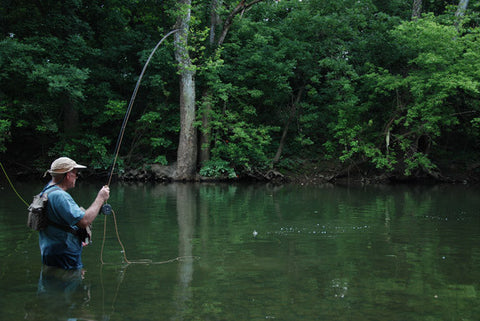
-
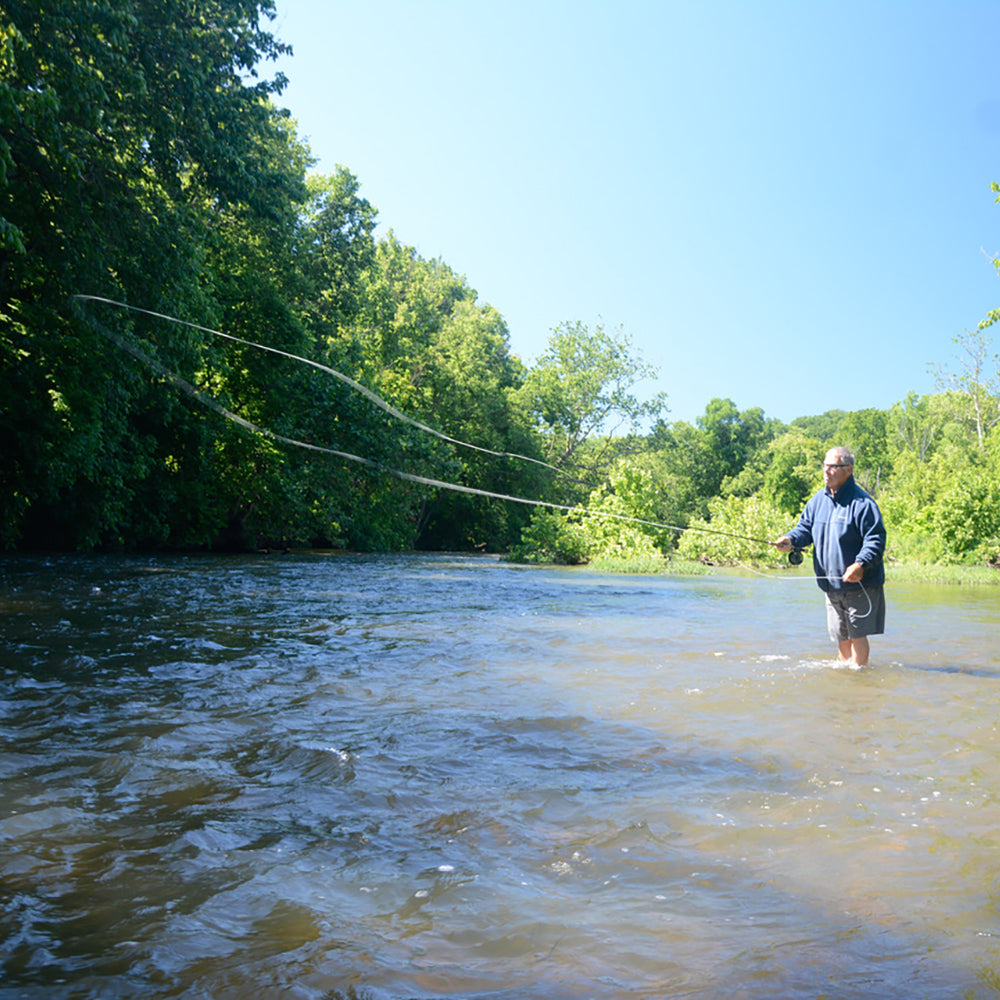
Learn Fly Fishing at Murray’s Fly Shop: Classes, Workshops & Schools
Welcome to Murray’s Fly Shop – Your Fly Fishing Learning Hub At...
-
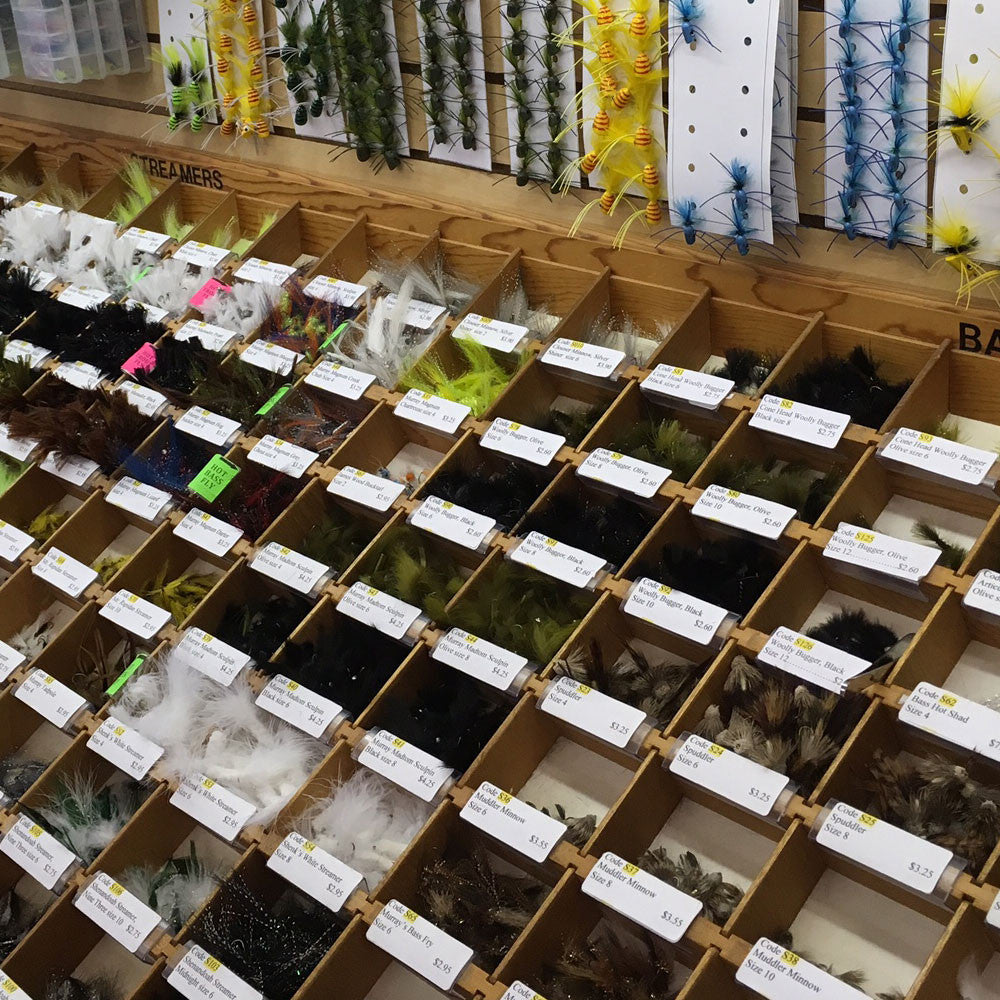
Featured Flies of the Month
Harry Murray's recommended fly list for this time of the year. (April...
-
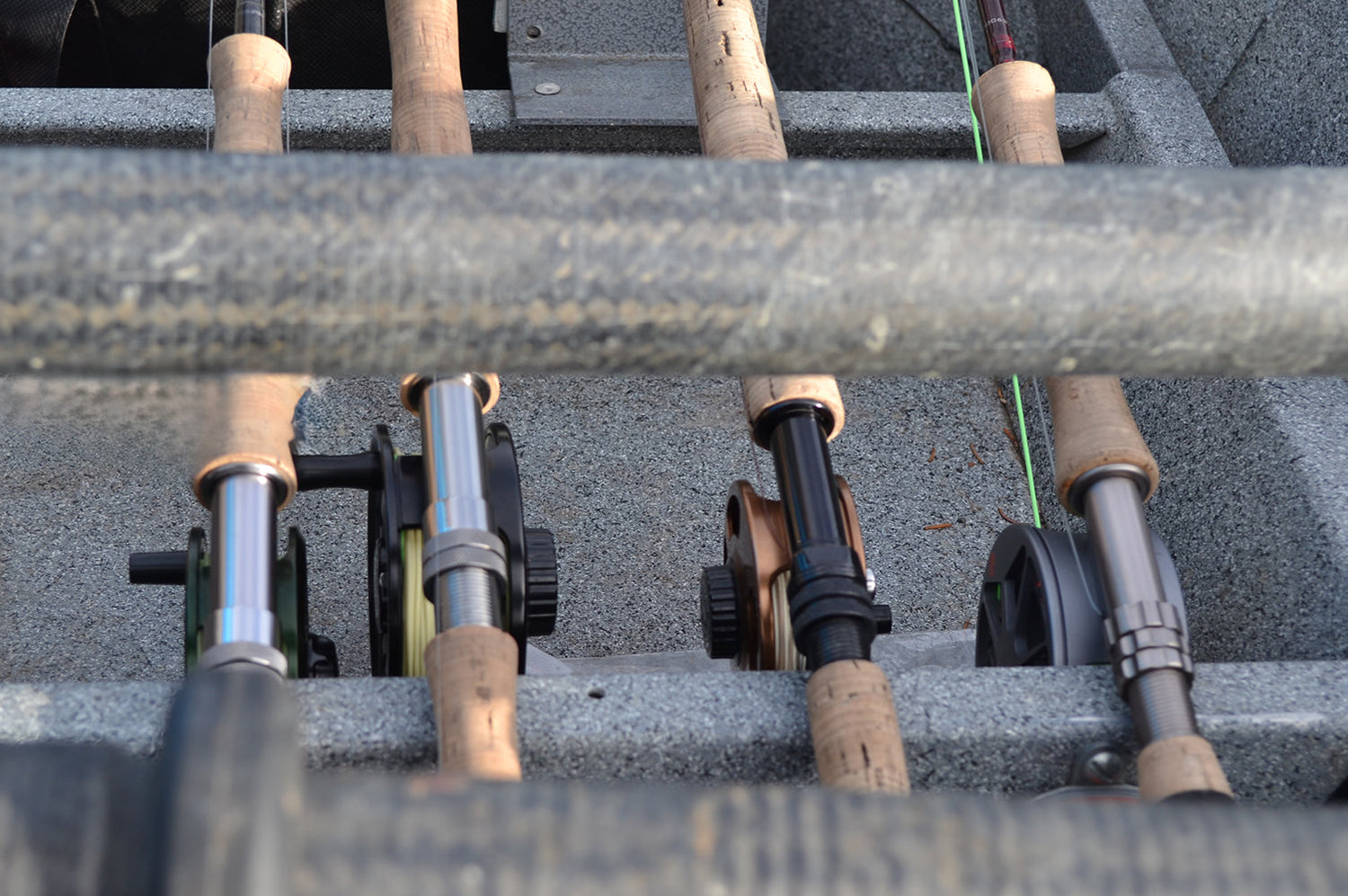
Fly Fishing Rod Outfits
Fly Fishing Rod and Reel Outfits for Smallmouth Bass fly fishing, Trout...
